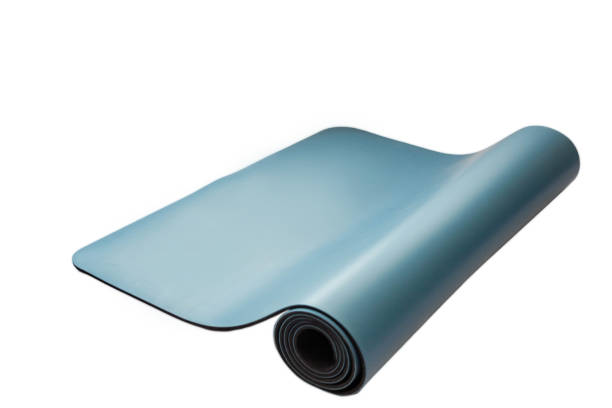Connecting with nature and getting away from the stresses of everyday life are both facilitated by camping and other outdoor activities. Yet when it comes to sleeping arrangements, regular air mattresses might not be the best choice.
While air mattresses are a standard option, there are alternatives to an air mattress that can offer the same level of support without the need to deal with the trouble of constantly having to inflate and deflate it.
This comprehensive guide will go through various alternatives to an air mattress and help you select the ideal one for your situation. So, let’s get started and learn which air mattress alternatives are ideal for your upcoming trip or overnight stay.
What Are Air Mattresses?
An air mattress is a particular form of inflated mattress that is frequently used for temporary sleeping arrangements, such as camping or as a guest bed. They are also occasionally referred to as air mattresses.

Air mattresses are constructed of PVC or vinyl and are intended to be filled with air using a pump, either manually or electrically. They are available in several sizes, from twin to king, and may be adjusted up or down to suit personal tastes.
For persons who have trouble rising from low surfaces, air mattresses can offer a supportive sleeping surface that is elevated off the ground. Also, they are transportable and simple to store when not in use.
There may be some disadvantages to air mattresses, though. As a result, they may leak or deflate easily, which can be uncomfortable at night. They can also be more prone to rips or punctures than other kinds of mattresses, especially if used outside.
Alternatives To An Air Mattress
If you’ve ever had overnight guests or gone for many overnight trips, you have probably realized that an air mattress is just not comfy.
We have laid down some choices below that you can choose from:
1. Futon
A futon is a great alternative to an air mattress for those who want a more traditional sleep surface. A futon may be used as either a couch or a bed. A mattress is often put on a frame that can be folded up to make a sofa or set flat to make a bed.
The major advantage of a futon over an air mattress is that it is a more permanent option for sleeping arrangements. A futon may be put up in a room and used as a bed regularly, although air mattresses are more portable and can be packed away simply.
With a thicker mattress and a sturdy frame, futons are more comfortable than air mattresses. They provide a comfortable resting surface without taking up too much area, making them an appealing option for guest rooms, compact flats, and similar settings.
Nevertheless, futons can be thicker and heavier than air mattresses, making them more challenging to carry and store. Depending on the quality of the mattress and the structure, they may be more expensive than air mattresses.
If you want a more permanent sleeping option that is both comfortable and space-efficient, a futon might be an excellent alternative to an air mattress. In contrast, it is not the ideal option if you require something lightweight and compact.
Sleeping on a futon may be a frustrating experience if it is not of excellent quality. It’s also worth noting that futons aren’t as long-lasting as regular mattresses, so you could end up having to replace them sooner.

2. Hammocks
When compared to air beds, hammocks are a lot more fun and original to use when camping or doing other outdoor activities. A hammock is a nice and soothing place to rest, made from a piece of cloth or netting that is strung between two trees or other supports.
Hammocks, as opposed to air mattresses, offer a more natural sleeping surface, which is one of its primary advantages. Some individuals find it more relaxing to float in the air than to lie on a flat surface. The smooth swaying motion of a hammock can be calming and aid in getting to sleep.
When it comes to outdoor pursuits like hiking, camping, or backpacking, hammocks are among the best equipment because of their portability and moderate weight. They are compact enough to fit in a backpack and simple enough to rig up anywhere you locate a suitable hanging point.
While a hammock may seem like the ideal resting arrangement, it does have its drawbacks. As hammocks are often only made to accommodate one person, they may not be the best choice for groups. It’s also not always easy to use them in places where there aren’t any suitable trees or other strong items to hang them from.
A hammock can be a perfect replacement for an air mattress if you’re searching for a lightweight and portable sleeping surface. But be prepared for the drawbacks and pick a hammock that works for your requirements and the weather of where you are going.
3. Camping Cot
A camping cot is an alternative to an air mattress that can serve as a stable and comfortable resting platform on outdoor camping vacations. The metal or aluminum frame of a camping cot provides a strong and stable foundation for the fabric or canvas that covers it.
One of the key advantages of a camping cot over an air mattress is the higher profile it offers. If you want a higher level of support when sleeping or simply don’t enjoy sleeping on the ground, this may be a better option for you.
Also, camping cots are portable and light, making them a great option for automobile camping and similar activities when weight is less of an issue. They’re simple to fold up and store, and some even come with tote bags.
However, camping cots are often heavier and larger than air mattresses, making them more cumbersome to travel and store. Depending on the structure and fabric quality, they can also be more costly than air mattresses.
4. Self-inflating Sleep Pad
An alternative to an air mattress that is also made for camping and trekking is a self-inflating sleep pad. Sleeping pads that inflate themselves have a foam core encased in a tough fabric shell. The pad is self-inflating, so all you have to do is open the valve for air to flow into the foam and you’ll have a soft, supportive place to sleep in no time.
A self-inflating sleep pad, as opposed to an air mattress, is a more portable and lightweight alternative to the former. Self-inflating sleeping pads are compact and lightweight, taking up almost little room when rolled up. They are sturdy and can handle the outdoors without breaking down.
Self-inflating sleep pads are also very insulating and comfy. In cold weather, the foam pad will keep you warm and comfortable while the cloth shell will keep you supported and cushioned.
Nevertheless, depending on the quality and brand, self-inflating sleep pads might cost more than air mattresses. In addition, they take some work to inflate and deflate because the valve has to be closed by hand. Unfortunately, not every size is offered in self-inflating mattress pads. There are brands that only provide one or two sizing options.
5. Memory Foam Pads
For a soft, supportive, and even warmer sleeping surface, especially when you’re stuck indoors, consider a memory foam pad as an alternative to an air mattress. You can get back and joint support from sleeping on a memory foam mattress pad since it molds to your body.
As compared to an air mattress, a memory foam pad has several advantages, including more support and cushioning for your body. As the foam molds to your shape, your weight is distributed more safely and comfortably across a larger area, putting less strain on your muscles and joints. It is very helpful for those needing bolstering due to back pain or other medical issues.
You may get a good night’s rest on a memory foam mattress pad, which is also incredibly cozy. If you have problems relaxing on a flat surface, the foam’s smooth texture may make it more appealing than a standard air mattress.
Memory foam pads are a comfortable alternative to air mattresses, although they can be heavier and more expensive. In addition, they are not as convenient to travel and store as air mattresses or other camping pads since they cannot be folded up.
6. Foldable Foam Mats
Foam mats that fold up easily are another option to air mattresses for those looking for a lightweight, comfortable sleeping surface that can be used anywhere. These foam mats may be rolled up and tucked away neatly when they are not in use.
As an alternative to an air mattress, a foldable foam mat has the advantages of being lightweight and easy to transport. As a result of their portability (rolled up or folded), they are a great pick for camping, hiking, and other outdoor pursuits.
Foam mats that fold up may serve as a yoga pad, an exercise surface, or even a playmat for kids. They are cheap and might be a fantastic option for those on a tight budget.

In contrast to air mattresses and other camping pads, foldable foam mats do not offer as much support or cushioning. Its lack of durability means it may not last as long as other camping cushions.
7. Rollaway Beds
Rollaway beds, often called folding beds or guest beds, are temporary sleeping accommodations that may be quickly folded up and stowed away. They’re common in studio flats, dorm rooms, and hotels as a spare bed for visitors or a place to sleep temporarily.
Sleeping on a rollaway bed is preferable to sleeping on an air mattress, which might deflate or sag in the middle of the night. Stronger materials are used to construct rollaway beds, making them more durable than air mattresses.
There are a few things to keep in mind while shopping for a rollaway bed, including its weight capacity, durability, and ease of construction. To ensure a restful night’s sleep, it’s also crucial to select a mattress that suits your comfort and support needs.
The use of rollaway beds is not without its drawbacks. To begin with, they might be a pain to maneuver if your property has stairs.
However, they might not be as cozy as a regular bed. Also, those with back issues may not benefit from sleeping on a rollaway
8. Sofa Bed
Sofa beds can serve as both a couch and a bed, making them a great alternative to an air mattress in the house.
A sofa bed is mostly a couch, but it also has a bed mattress that can be pulled out when necessary. The mattress is thinner and not designed for regular use, although it is available in single, double, and queen sizes. A mattress topper may be placed on top of your couch bed to provide comfort and support.
One of the key advantages of a sofa bed over an air mattress is that it offers a pleasant and supportive resting surface similar to a conventional bed. Sofa beds are convenient for those with little living quarters since they may be utilized as a conventional sofa throughout the day.
However, depending on the sofa and mattress quality, a sofa bed may be more expensive than an air mattress. They are often heavier and bulkier than air mattresses, which makes them more difficult to handle and transport.
9. Murphy Beds
Murphy beds are an excellent solution for making the most out of the limited floor area. When not in use, you may fold up these beds or stand them up to save space. They come in a wide range of sizes, from king to twin, and a wide range of styles.

Murphy beds are an excellent alternative for those who are short on floor space, as they fold up when not in use. They’re simple to put away when not in use, freeing up floor space for other uses during the day. Some updated models now come with supplemental pieces like sofas, workstations, drawers, and shelves, allowing the bedroom to serve as more of a general-purpose room.
However, Murphy beds are more expensive than air mattresses since they usually need to be professionally installed and may need to be tailored to fit your space.
10. Padded Sleeping Bags
If you don’t want to use an air mattress when camping, a sleeping bag is a good option. It’s stuffed with synthetic insulation to keep you warm at night, and it’s cushioned for extra comfort.
It is preferable to an air mattress because of the warmth it provides. When compared to an air mattress, a padded sleeping bag is preferable because of how well it molds to the shape of the sleeper’s body and how safe it is from punctures.
Padded sleeping bags are also quite adaptable, as they may be used for a wide range of outdoor activities. Those who like to sleep on their sides may also find them to be comfortable since they offer more support and padding for the hips and shoulders.
Those with back or neck trouble, in particular, may find that padded sleeping bags are not as comfortable as air mattresses or other camping pads. Depending on the quality of the cushioning and insulation, they may also be more costly than standard sleeping bags.
11. Inflatable Camping Mats
Another alternative to air mattresses for camping or other outdoor activities is inflatable camping mats. These mats are usually composed of strong materials like PVC or nylon and are meant to be portable and lightweight.
Inflatable camping mats are available in a variety of sizes and thicknesses and can be inflated easily with a pump or even just your tongue. The use of an inflatable camping mat makes sleeping on the hard or uneven ground much more tolerable.
Inflatable camping mats are great for hiking and other outdoor activities since they are so portable. Adding an inflatable camping mat between your body and the cold ground is a great way to stay warm.
Think about dimensions, thickness, and weight when selecting an inflatable camping mat. The comfort and insulation provided by thicker mats are worth the additional weight and size. You should pick a mat that is both functional and comfy for you to use as a sleeping surface.
Why You Should Use Alternative to Air Mattresses
There are several reasons why you might want to consider alternatives to air mattresses:
1. Comfort
Although air mattresses can provide a pleasant night’s sleep, they have a tendency to lose air pressure or deflate as you sleep. There are other options that can give a more secure and comfortable resting surface, such as foam mattress pads or camping cots.
2. Portability
While going on a hike or backpacking trip, an air mattress might be cumbersome to bring along. Inflatable camping mats and folding foam mats are alternatives that are both lightweight and easy to pack for long trips.
3. Durability
Air mattresses are convenient, but they can be irritating if they get a hole or a leak and you can’t use them. Some options, such as camping cots or self-inflating sleeping mats, are more durable and likely to sustain damage from punctures or leaks.

Conclusion
Camping and other outdoor pursuits are fantastic ways to disconnect from daily stress and reconnect with nature. But, an air mattress is not always the greatest choice for sleeping arrangements.
Thankfully, there are several alternatives to air mattresses that can offer convenience, support, and comfort instead of air mattresses.
While selecting a mattress substitute for an air mattress, it’s crucial to take into account elements like weight, packability, comfort, and support. We hope this blog post helps you in choosing your next alternative to air mattress.
Related posts:
- Harnessing the Power of the Sun: A Guide to Solar Installation - February 12, 2024
- Vacuum Trucks: The Unseen Heroes of Waste Management and Their Environmental Benefits, Featuring McDonald Farms - December 11, 2023
- Satellites And Climate Adaptation: Solutions From Space - December 1, 2023







